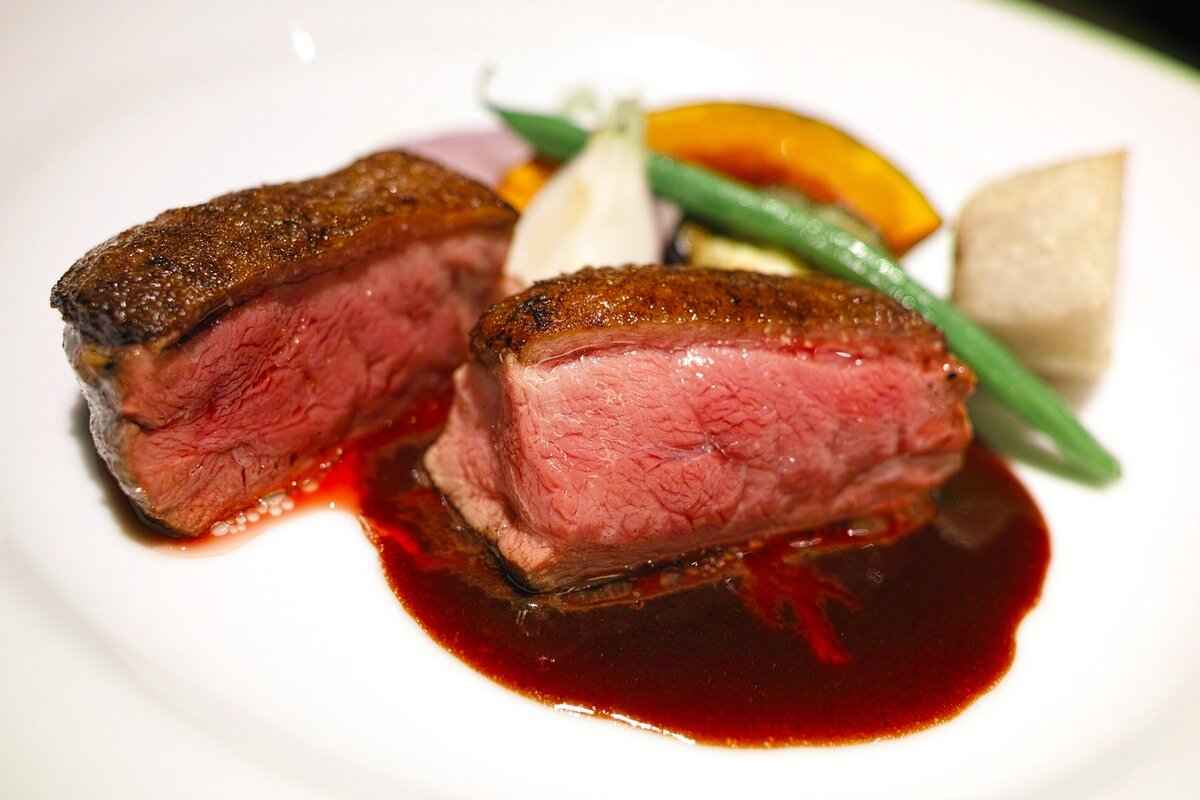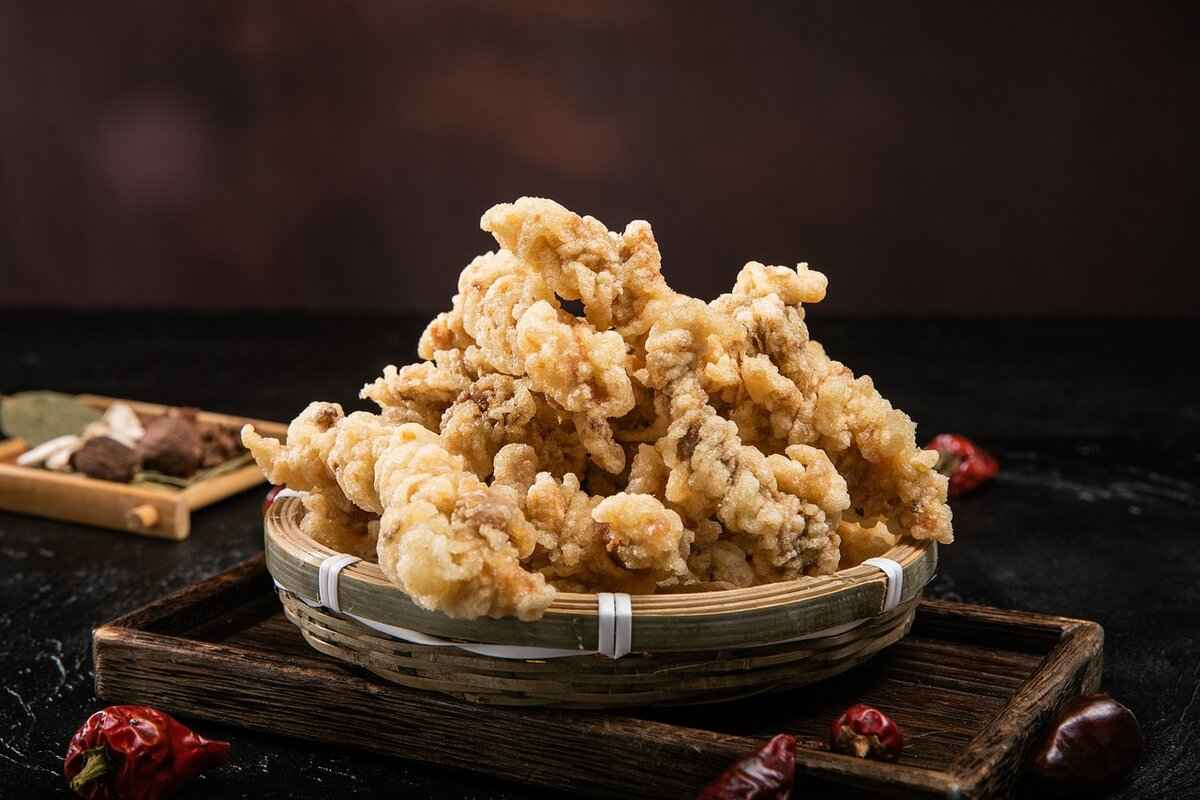Filipino cuisine is a vibrant and diverse culinary landscape that showcases a rich blend of cultural influences. This article delves into the intricate tapestry of flavors and techniques that define Filipino food, reflecting the nation’s history and cultural evolution. From the influence of Spanish colonization to the culinary contributions of Chinese immigrants and the rich traditions of the Malay people, Filipino cuisine is a testament to the country’s multicultural heritage.
Filipino cuisine is characterized by its fusion of various culinary traditions, primarily stemming from Spanish, Chinese, and Malay cultures. Each of these influences has left a lasting mark on the flavors and cooking techniques employed in Filipino kitchens.
The arrival of the Spanish in the 16th century significantly transformed Filipino culinary practices. New ingredients such as tomatoes, potatoes, and various spices were introduced, along with cooking methods that emphasized stewing and marinating. Iconic dishes like adobo and lechon are perfect examples of this enduring influence.
Adobo, often regarded as the national dish of the Philippines, is a savory and tangy dish made by marinating meat in vinegar, soy sauce, garlic, and spices. This dish not only highlights the Spanish method of marinating but also reflects local adaptations that cater to Filipino tastes, making it a staple in many households.
Lechon, or roasted pig, is a centerpiece at major Filipino celebrations, symbolizing abundance and festivity. Its preparation is often a communal affair, showcasing the Spanish influence on Filipino dining customs and the importance of sharing food during celebrations.
Chinese immigrants have played a pivotal role in shaping Filipino cuisine, introducing cooking techniques and ingredients that have become integral to local dishes. Dishes such as lumpia and pancit exemplify this cultural fusion, combining Chinese culinary practices with local flavors.
Lumpia, a type of spring roll, is a beloved snack in the Philippines. It showcases the Chinese influence on Filipino cuisine and is often served with a sweet and sour dipping sauce, making it a popular choice for gatherings and celebrations.
Pancit, or noodle dishes, are deeply embedded in Filipino culture, symbolizing longevity and good fortune. These dishes are often present at birthdays and other significant events, reflecting the Chinese tradition of celebrating life with food.
The Malay influence in Filipino cuisine is evident in the use of spices and cooking techniques that bring depth and complexity to various dishes. Traditional meals like nasi lemak and kare-kare highlight this blend of flavors, showcasing the rich culinary heritage of the region.
The Philippines is an archipelago with over 7,000 islands, each boasting its own unique culinary traditions. Regional cuisines incorporate local ingredients and cultural influences, resulting in a vast array of dishes that reflect the country’s diversity. For instance, sinigang from the Visayas and kinilaw from Mindanao are just two examples of how local flavors come together to create distinct culinary experiences.
Notable regional dishes highlight the unique ingredients and cooking styles found across the Philippines. Sinigang, a sour soup, is cherished for its refreshing flavors, while kinilaw, a type of ceviche, showcases the abundance of fresh seafood in the region.
Food plays a crucial role in shaping Filipino identity, with traditional dishes serving as a connection to cultural heritage. Sharing meals fosters community and strengthens familial bonds, making food an integral part of Filipino life and culture.

What Are the Key Influences on Filipino Cuisine?
Filipino cuisine is a vibrant tapestry woven from the rich histories and cultures of various nations. The culinary landscape of the Philippines is primarily shaped by three major influences: Spanish, Chinese, and Malay. Each of these cultures has left an indelible mark on Filipino food, resulting in a unique blend of flavors, techniques, and traditions that define the nation’s culinary identity.
The essence of Filipino cuisine lies in its ability to adapt and integrate diverse culinary practices. The Spanish influence is perhaps the most pronounced, a legacy of over three centuries of colonization. This influence is evident in the use of ingredients such as garlic, vinegar, and spices, which are staples in many Filipino dishes. For instance, the iconic adobo showcases a blend of marinated meats simmered to perfection, reflecting the Spanish method of cooking while incorporating local flavors.
On the other hand, the Chinese influence is seen in the incorporation of stir-frying techniques and the introduction of various ingredients, such as soy sauce and noodles. Dishes like pancit and lumpia highlight this fusion, combining Chinese culinary methods with Filipino tastes. Pancit, often served during celebrations, symbolizes longevity and prosperity, making it a staple at gatherings.
Furthermore, the Malay influence is characterized by the use of aromatic spices and coconut milk, which are prevalent in dishes such as kare-kare and nasi lemak. This influence enriches Filipino cuisine with a depth of flavor that is both comforting and exotic, showcasing the country’s diverse culinary heritage.
Spanish colonization had a profound impact on Filipino food culture. The introduction of new ingredients, cooking methods, and dining customs transformed the local culinary landscape. For example, the practice of roasting meats, which culminates in the beloved lechon (roasted pig), became a symbol of celebration and communal feasting. Lechon is often the centerpiece of major festivities, reflecting the Spanish influence on communal dining.
Adobo is frequently regarded as the national dish of the Philippines. This savory and tangy dish typically consists of chicken or pork marinated in vinegar, soy sauce, garlic, and spices, then simmered until tender. Its simplicity and adaptability make it a beloved staple in Filipino households. The dish’s origins can be traced back to the Spanish method of marinating meats, which has been embraced and localized over the years, making it a true representation of Filipino culinary identity.
Lechon holds a special place in Filipino culture, particularly during celebrations such as birthdays, weddings, and fiestas. The preparation of lechon is often a communal affair, involving family and friends who come together to enjoy the process and the feast. The crispy skin and succulent meat symbolize abundance and joy, making it a highlight of any gathering.
The arrival of Chinese immigrants in the Philippines brought a wealth of culinary traditions that have been seamlessly integrated into Filipino cuisine. The use of stir-frying, steaming, and deep-frying techniques showcases this influence. Lumpia, a type of spring roll, is a popular snack that exemplifies the Chinese contribution to Filipino food. Often served with a sweet and sour sauce, lumpia is enjoyed by many as an appetizer or snack.
Lumpia comes in various forms, including fresh and fried versions. The fresh lumpia is filled with a mixture of vegetables, meat, and sometimes shrimp, wrapped in a soft crepe-like skin. Fried lumpia, on the other hand, is crispy and golden, making it a favorite at parties and gatherings. Both versions are typically served with dipping sauces, enhancing their flavor and appeal.
Pancit refers to a variety of noodle dishes that are integral to Filipino celebrations. These dishes symbolize longevity and good fortune, making them a must-have during birthdays and other significant events. The wide range of pancit recipes, from pancit canton to pancit bihon, reflects the diverse influences and regional variations within Filipino cuisine.
The Malay influence is prominent in the use of spices and cooking methods that enhance the flavors of Filipino dishes. The incorporation of coconut milk, turmeric, and chili peppers adds depth and richness to various recipes. Dishes like kare-kare, a peanut stew, and nasi lemak, a fragrant rice dish, showcase the harmonious blend of Malay flavors in Filipino cuisine.
The Philippines, being an archipelago, boasts a rich tapestry of regional cuisines. Each region has its own unique ingredients, cooking styles, and cultural practices that contribute to the overall diversity of Filipino food. For instance, sinigang from the Visayas and kinilaw from Mindanao highlight local ingredients and culinary techniques, showcasing the distinct flavors that define each area.
- Sinigang: A sour soup made with tamarind, often featuring pork or shrimp.
- Kinilaw: A type of ceviche made with fresh fish marinated in vinegar and citrus.
- Pancit Habhab: A noodle dish from Luzon served on a banana leaf.
Food in the Philippines is more than sustenance; it is a reflection of cultural identity and heritage. Traditional dishes serve as a connection to the past, fostering a sense of community and belonging. Sharing meals with family and friends strengthens bonds and preserves cultural traditions, making Filipino cuisine a vital aspect of the nation’s identity.

How Did Spanish Colonization Shape Filipino Food?
Filipino cuisine is a vibrant tapestry woven from various cultural influences, with Spanish colonization playing a pivotal role in shaping its unique identity. The arrival of the Spanish in the 16th century introduced not only new ingredients but also innovative cooking techniques that have become integral to Filipino culinary traditions. This article delves into how Spanish colonization has indelibly influenced Filipino food culture, highlighting iconic dishes such as adobo and lechon.
The Spanish brought with them an array of ingredients that transformed the local culinary landscape. Items such as tomatoes, potatoes, chocolate, and various spices were incorporated into local dishes, enhancing flavors and expanding the Filipino palate. The use of vinegar for preservation, a technique learned from the Spanish, became a staple in many Filipino households.
During the Spanish colonization, traditional Filipino cooking methods evolved significantly. The practice of marinating meats, a hallmark of Spanish cuisine, was adopted and adapted to create dishes like adobo. This method involves soaking meat in a mixture of vinegar, soy sauce, garlic, and spices, resulting in a savory and tangy flavor profile that has become beloved across the Philippines.
Adobo is often regarded as the national dish of the Philippines, embodying the fusion of Spanish and local culinary practices. Its versatility allows for various adaptations, including chicken, pork, and even vegetables. The dish’s enduring popularity reflects its deep-rooted connection to Filipino culture, often served during family gatherings and celebrations.
Lechon, or roasted pig, is another quintessential dish that showcases the impact of Spanish culinary traditions. Traditionally prepared for special occasions, lechon is celebrated for its crispy skin and tender meat. The communal aspect of sharing lechon during festivities highlights the Spanish influence on Filipino dining customs, where food serves as a centerpiece for social gatherings.
The Spanish introduced various cooking styles that have been integrated into Filipino cuisine. Techniques such as stewing, roasting, and frying became popular, leading to a diverse array of dishes. The use of sautéing with garlic and onions, a common practice in Spanish cooking, is now a foundational technique in Filipino kitchens.
The lasting impact of Spanish colonization is evident in the way Filipino food is prepared and enjoyed today. Many traditional recipes have been passed down through generations, maintaining their authenticity while also evolving to incorporate local ingredients. The fusion of Spanish and indigenous flavors has created a distinctive culinary identity that is celebrated both locally and internationally.
Aside from adobo and lechon, other dishes such as pancit and empanada also reflect Spanish influence. Pancit, a noodle dish, is often served during birthdays and celebrations, symbolizing long life and good fortune. Empanadas, filled pastries, showcase the Spanish tradition of savory pies, adapted to Filipino tastes with local fillings.
In conclusion, the Spanish colonization of the Philippines has left an indelible mark on Filipino cuisine, introducing new ingredients, cooking methods, and culinary traditions that continue to thrive today. The fusion of these influences has created a rich and diverse food culture that is a source of pride for Filipinos around the world.
What is Adobo and Why is it Iconic?
Adobo is not just a dish; it is a culinary symbol that embodies the rich cultural heritage of the Philippines. Often regarded as the national dish, adobo showcases a perfect blend of savory and tangy flavors that resonate with both locals and visitors alike. Its roots can be traced back to the Spanish colonial period, where the method of marinating and stewing meats was introduced. However, Filipinos have uniquely adapted this technique to incorporate local ingredients and flavors, making adobo a true representation of Filipino identity.
The magic of adobo lies in its versatility. Traditionally, it is made with pork or chicken, but variations exist that include beef, seafood, and even vegetables. The key ingredients typically include soy sauce, vinegar, garlic, bay leaves, and peppercorns, all of which come together to create a harmonious balance of flavors. The marination process allows the meat to absorb these flavors deeply, resulting in a dish that is both tender and flavorful.
The preparation of adobo is relatively straightforward, yet it requires a certain level of care to achieve the perfect balance of flavors. The process usually involves:
- Marination: Meats are marinated in a mixture of soy sauce and vinegar, along with spices, for several hours or overnight.
- Cooking: The marinated meat is then simmered until tender, allowing the flavors to meld beautifully.
- Reduction: The sauce is often reduced to create a thicker consistency, enhancing the dish’s flavor profile.
This method of cooking not only enhances the taste but also allows the dish to preserve well, making it a popular choice for families and gatherings.
Adobo serves as more than just a meal; it is a cultural artifact that reflects the history and traditions of the Filipino people. Each region of the Philippines has its own version of adobo, influenced by local ingredients and cooking styles. For instance, some regions may use coconut milk for a creamier texture, while others might add potatoes or hard-boiled eggs for additional flavor and substance.
This adaptability highlights the communal nature of Filipino dining, where families often come together to share meals. Adobo is frequently served during special occasions, celebrations, and even ordinary family dinners, making it a staple in Filipino households.
There are numerous variations of adobo, each telling a different story. Some popular types include:
- Adobo sa Gata: A creamy version that incorporates coconut milk.
- Adobo with Pineapple: A sweet and tangy variant that adds pineapple chunks.
- Adobong Puti: A white version that omits soy sauce, relying on vinegar and garlic for flavor.
These variations not only showcase the creativity of Filipino cooks but also highlight the regional diversity within the country.
In many ways, adobo embodies the resilience and adaptability of the Filipino spirit. The dish has survived the test of time, evolving through generations while maintaining its core essence. It is a reminder of the rich history of the Philippines, marked by colonization, cultural exchange, and the enduring love for food.
Whether enjoyed at a family gathering or a festive celebration, adobo remains a cherished dish that continues to bring people together, making it a true icon of Filipino cuisine.
What Role Does Lechon Play in Filipino Celebrations?
Lechon, or roasted pig, holds a prestigious place in Filipino celebrations, symbolizing not only culinary excellence but also cultural heritage. This traditional dish is often the centerpiece of festivities, embodying the spirit of communal dining and the joy of gathering with family and friends. Its preparation is a meticulous process that showcases the rich history and cultural influences that have shaped Filipino cuisine.
The preparation of lechon is an art form in itself. A whole pig is marinated with a blend of spices, often including garlic, lemongrass, and soy sauce, before being roasted over an open flame or in a specialized oven. The result is a perfectly crispy skin that crackles with flavor, while the meat remains tender and juicy. This dish is not just about taste; it is a visual feast that adds a festive ambiance to any occasion.
Lechon is not merely food; it is a symbol of celebration and unity in Filipino culture. It is traditionally served during significant events such as weddings, birthdays, and religious festivities. The act of sharing lechon among family and friends fosters a sense of community, reinforcing bonds and creating lasting memories. The dish’s presence at these gatherings is a testament to its role in Filipino identity, as it brings people together in a shared experience of joy and gratitude.
The origins of lechon can be traced back to Spanish colonization, which introduced new cooking techniques and flavors to the Philippines. This influence is evident in the way lechon is prepared and served, drawing parallels to the Spanish tradition of roasting whole animals for feasts. The communal aspect of dining, where everyone gathers around to enjoy the meal, is also a legacy of this cultural exchange. Today, lechon stands as a proud representation of Filipino culinary heritage, blending local ingredients with a Spanish cooking style.
While the classic lechon is widely celebrated, regional variations add unique twists to this beloved dish. For instance, Lechon Cebu is renowned for its distinct seasoning and cooking method, often featuring a more pronounced flavor profile due to the use of local herbs and spices. In contrast, Lechon Kawali is a pan-fried version that offers a different texture and taste, appealing to those who prefer a quicker preparation. Each region’s version of lechon showcases the diversity of Filipino cuisine and the creativity of its people.
The preparation of lechon for special occasions is a communal effort, often involving family members who come together to ensure the dish is perfect. The process begins days in advance, with careful selection of the pig and meticulous marination. On the day of the event, the pig is roasted, sometimes for hours, until the skin achieves that coveted golden brown color. This preparation ritual not only highlights the importance of lechon in Filipino celebrations but also emphasizes the values of teamwork and tradition.
In contemporary Filipino culture, lechon continues to play a vital role in celebrations, adapting to modern tastes while retaining its traditional essence. Catering services now offer lechon as a staple for parties, weddings, and corporate events, making it more accessible to a wider audience. Additionally, social media has amplified the allure of lechon, with countless photos and videos showcasing its preparation and presentation, further embedding it in the fabric of Filipino festivities.
In summary, lechon is much more than just a dish; it is a cultural icon that encapsulates the essence of Filipino celebrations. Its rich history, communal significance, and enduring popularity make it a beloved centerpiece at gatherings, reflecting the vibrant spirit of the Filipino people.

How Has Chinese Cuisine Influenced Filipino Dishes?
Filipino cuisine is a vibrant tapestry woven from various cultural influences, and among the most significant is that of Chinese cuisine. The arrival of Chinese immigrants in the Philippines, particularly during the 16th century, introduced a plethora of culinary techniques and ingredients that have become integral to Filipino food culture. This article delves into the profound impact of Chinese culinary traditions on Filipino dishes, highlighting iconic foods and their significance.
Several Chinese dishes have been embraced and adapted within Filipino cuisine. Two of the most notable are lumpia and pancit, which illustrate the successful melding of Chinese cooking methods with local Filipino ingredients.
Lumpia, akin to spring rolls, is a beloved snack and appetizer in the Philippines. Typically filled with a mixture of vegetables, meat, or shrimp, these rolls are wrapped in a thin crepe-like pastry. The preparation involves:
- Chopping vegetables finely, often including carrots, green beans, and cabbage.
- Mixing the vegetables with ground pork or shrimp, seasoned with soy sauce and spices.
- Wrapping the filling in the pastry and frying until golden brown.
Served with a sweet and sour dipping sauce, lumpia is a staple at parties and gatherings, reflecting the Chinese influence on Filipino celebrations.
Pancit refers to various noodle dishes in the Philippines and is deeply rooted in Chinese tradition. The word “pancit” itself comes from the Hokkien term for “food.” Traditionally, these noodle dishes symbolize longevity and are served during birthdays and significant life events. Some popular varieties include:
- Pancit Canton: Stir-fried egg noodles with a mix of vegetables and proteins.
- Pancit Malabon: Thick rice noodles topped with a savory seafood sauce.
- Pancit Bihon: Thin rice noodles sautéed with vegetables and meat.
Each type of pancit showcases the adaptability of Chinese cooking methods, incorporating local flavors and ingredients.
Chinese immigrants introduced various cooking techniques that transformed Filipino culinary practices. Techniques such as stir-frying, steaming, and braising became popular, allowing for quick cooking methods that preserve the flavors and nutrients of the ingredients. This influence is evident in dishes like:
- Chop Suey: A stir-fried dish made with a variety of vegetables and meat.
- Sweet and Sour Pork: A dish that combines Chinese flavors with local twists.
These cooking methods have not only enhanced the flavor profiles of Filipino dishes but also made them more accessible for everyday cooking.
The integration of Chinese cuisine into Filipino culture goes beyond mere food; it represents the blending of traditions and the adaptability of Filipino identity. Dishes like lumpia and pancit have become synonymous with Filipino celebrations, embodying the spirit of community and family. They are often featured in festive occasions, symbolizing prosperity and good fortune.
Chinese-Filipino restaurants play a crucial role in promoting this culinary fusion. They offer a unique dining experience that showcases the best of both worlds. Diners can enjoy traditional Chinese dishes with a Filipino twist, allowing for a deeper appreciation of the cultural exchange that has shaped Filipino cuisine over centuries.
In conclusion, the influence of Chinese cuisine on Filipino dishes is profound and multifaceted. From the beloved lumpia to the celebratory pancit, these dishes reflect a rich history of cultural exchange and adaptation. As Filipino cuisine continues to evolve, the legacy of Chinese culinary traditions remains a vital part of its identity.
What is Lumpia and How is it Served?
Lumpia, a beloved type of spring roll, is more than just a snack; it is a culinary icon in the Philippines that reflects the country’s rich history and diverse cultural influences. This delightful dish has its roots in Chinese cuisine, yet it has evolved into a uniquely Filipino delicacy that is enjoyed by many.
What sets lumpia apart from other spring rolls is its versatility. It can be filled with a variety of ingredients, ranging from vegetables to meats, and is often wrapped in a thin crepe-like skin. This adaptability allows lumpia to be served in numerous variations, such as:
- Lumpiang Shanghai: A popular version filled with ground pork, vegetables, and spices.
- Lumpiang Sariwa: A fresh version made with vegetables wrapped in a soft crepe and served with a sweet peanut sauce.
- Lumpiang Ubod: Made with heart of palm, this variant is often served fresh and is a favorite among health-conscious eaters.
Lumpia is typically served as an appetizer or snack during gatherings and celebrations. It is often accompanied by a sweet and sour sauce for dipping, which enhances its flavors and adds a delightful contrast. The sauce can vary in sweetness and tanginess, depending on personal preference.
In Filipino culture, lumpia is more than just food; it is a symbol of hospitality and community. It is commonly found at parties, family gatherings, and festive occasions. The act of sharing lumpia fosters a sense of togetherness and celebration among family and friends.
The preparation of lumpia involves several steps:
- Preparing the Filling: The filling is usually a mixture of ground meat, vegetables, and seasonings. It is cooked before being wrapped.
- Wrapping the Lumpia: A small amount of filling is placed on a wrapper, and it is carefully rolled to ensure it stays intact during cooking.
- Cooking: Lumpia can be deep-fried, pan-fried, or served fresh. Deep-frying gives it a crispy texture, while fresh lumpia offers a healthier option.
The popularity of lumpia can be attributed to its delicious taste, easy preparation, and the joy it brings during social gatherings. Its ability to cater to various dietary preferences, such as vegetarian or meat-based, makes it a favorite among many. Furthermore, its presence at celebrations signifies the blending of cultures in the Philippines, showcasing the Chinese influence on Filipino cuisine.
Yes, lumpia can be prepared in advance, making it a convenient option for hosts. The wrapped lumpia can be frozen and cooked later, ensuring that they are fresh and crispy when served. This makes it an ideal choice for busy families or those planning large events.
In summary, lumpia is a delicious representation of Filipino culinary heritage, showcasing the influence of Chinese cuisine while embodying the warmth and hospitality of Filipino culture. Its various forms and the joy it brings to gatherings make it a cherished dish that continues to be loved by many.
Why is Pancit a Staple in Filipino Gatherings?
Pancit, a beloved noodle dish in the Philippines, holds a special place in the hearts and celebrations of Filipinos. This dish not only represents a delightful culinary experience but also embodies deep cultural significance. It is often served during birthdays, anniversaries, and other important gatherings, symbolizing longevity and good fortune. The tradition of serving pancit is rooted in Chinese customs, which Filipinos have embraced and adapted over centuries.
Pancit encompasses a wide variety of noodle dishes, each featuring different ingredients and preparation methods. From the stir-fried pancit canton to the soupy pancit mami, the diversity of this dish reflects the rich culinary heritage of the Philippines. The use of various meats, vegetables, and seasonings allows for a personal touch in each preparation, making it a versatile dish that can cater to different tastes and dietary preferences.
The tradition of serving pancit during celebrations is deeply ingrained in Filipino culture. It is a way to honor guests and to express wishes for a long and prosperous life. The act of sharing a plate of pancit fosters a sense of community and connection among family and friends. This communal aspect of dining is crucial in Filipino culture, where food serves as a medium for bonding and creating lasting memories.
- Pancit Canton: A stir-fried noodle dish that is often loaded with vegetables and meat.
- Pancit Bihon: Made with thin rice noodles, typically served with a mix of meats and vegetables.
- Pancit Malabon: Known for its thick noodles and seafood toppings, offering a unique flavor profile.
- Pancit Palabok: A rice noodle dish topped with a savory shrimp sauce and garnished with hard-boiled eggs and chicharrón.
The association of pancit with celebrations goes beyond mere tradition; it is steeped in the belief that the long noodles symbolize a long life. During significant milestones such as birthdays, weddings, and holidays, serving pancit is a way of wishing the celebrant good health and many more years to come. This practice highlights the importance of food in Filipino culture, where each dish is imbued with meaning and emotion.
As with many dishes, pancit has evolved over time, influenced by various regional and international flavors. While traditional recipes remain popular, modern interpretations have emerged, incorporating local ingredients and contemporary cooking techniques. This evolution reflects the adaptability of Filipino cuisine and its ability to embrace change while honoring its roots.
The beauty of pancit lies in its flexibility regarding ingredients. Common components include:
- Noodles: The foundation of the dish, available in various forms such as rice noodles, egg noodles, and wheat noodles.
- Meats: Chicken, pork, shrimp, and beef are popular choices that add flavor and substance.
- Vegetables: Carrots, cabbage, and bell peppers are often included for color and nutrition.
- Seasonings: Soy sauce, garlic, and onion are essential for creating the dish’s savory profile.
In conclusion, pancit is more than just a dish; it is a cultural emblem that encapsulates the essence of Filipino gatherings. Its rich history, variety, and significance in celebrations make it a staple that continues to bring people together, fostering connections and creating cherished memories.

What Malay Influences Are Present in Filipino Cuisine?
Filipino cuisine is a vibrant tapestry woven from various cultural influences, with Malay cuisine playing a significant role. The rich heritage of the Philippines is reflected in its culinary practices, where the use of spices and unique cooking methods stand out. This article delves into the Malay influences present in Filipino cuisine, showcasing how these elements contribute to the overall flavor and identity of Filipino dishes.
The use of spices is a hallmark of Malay cuisine, and this influence is evident in many Filipino dishes. Ingredients such as turmeric, ginger, and lemongrass are commonly used, adding depth and complexity to meals. For instance, dishes like kare-kare—a rich oxtail stew—often incorporate peanut sauce flavored with these spices, resulting in a unique taste that is both savory and aromatic.
Nasi lemak, a traditional Malay dish, consists of rice cooked in coconut milk, served with various accompaniments. This dish reflects the Malay influence on Filipino breakfast staples, where rice is often paired with fried fish, eggs, and a spicy sauce. In the Philippines, similar concepts can be found in dishes like silog, where rice is served with fried meats and eggs, showcasing the blend of flavors and cooking techniques.
Malay cooking methods, such as steaming and grilling, have also made their way into Filipino culinary practices. Techniques like inasal, a method of marinating and grilling chicken, highlight this influence. The use of banana leaves for wrapping and cooking food is another technique borrowed from Malay traditions, enhancing the flavor and aroma of dishes.
Herbs are essential in both Malay and Filipino cuisines. Ingredients such as coriander and mint are often used to brighten up dishes. In Filipino cuisine, these herbs are typically found in soups and stews, adding freshness and complexity. The incorporation of herbs not only enhances the flavor but also reflects the shared culinary heritage between the two cultures.
Several Filipino dishes have distinct Malay roots, such as adobo and ginataang dishes, which utilize coconut milk—a staple in Malay cooking. These dishes often exhibit a balance of sweet, savory, and spicy flavors, showcasing the harmonious blend that characterizes both cuisines. The adaptation of these dishes to local tastes further emphasizes the fusion of culinary traditions.
Festivals in the Philippines often showcase the rich culinary traditions influenced by Malay culture. Dishes prepared during these celebrations, such as pancit and lechon, are infused with spices and flavors reminiscent of Malay cooking. The communal aspect of sharing these meals during festivities reflects the importance of food in Filipino culture, as it brings families and communities together.
In summary, the Malay influences in Filipino cuisine are profound and multifaceted. From the use of spices and cooking methods to the incorporation of herbs and unique dishes, these elements contribute to the rich culinary landscape of the Philippines. Understanding these influences not only enhances appreciation for Filipino food but also highlights the interconnectedness of cultures through cuisine.

How Do Regional Variations in Filipino Cuisine Reflect Cultural Diversity?
The Philippines, an archipelago comprising over 7,000 islands, boasts a vibrant tapestry of regional cuisines that are rich in flavor and history. Each region has its own unique culinary identity, shaped by local ingredients, cultural influences, and historical events. This diversity not only reflects the country’s rich heritage but also showcases the adaptability and creativity of Filipino cooking.
Each region in the Philippines has its own distinct culinary traditions. These variations arise from factors such as geography, climate, and the availability of local ingredients. For instance, coastal regions often feature seafood prominently, while mountainous areas may focus on root crops and livestock. This diversity leads to a wide array of flavors and cooking techniques that are unique to each region.
Local ingredients play a crucial role in defining regional cuisines. For example, the Visayas region is known for its abundant seafood, leading to dishes like sinigang na baboy (pork in a sour broth) that utilize fresh fish and shellfish. Meanwhile, in Luzon, the use of rice is prevalent, with dishes like kare-kare (oxtail stew) highlighting the region’s agricultural products. This emphasis on local ingredients not only enhances the flavors but also fosters a sense of community and connection to the land.
Cultural influences from indigenous peoples, as well as from colonizers such as the Spanish and Chinese, have significantly shaped Filipino cuisine. For instance, the Ilocos region is famous for its bagnet (crispy pork belly), a dish influenced by Chinese cooking techniques. In contrast, the Mindanao region showcases Malay influences, evident in dishes like nasi lemak, which features rice cooked in coconut milk and served with various accompaniments.
- Sinigang – A sour soup that varies in ingredients, often made with pork, shrimp, or fish, popular in the Visayas and Luzon.
- Lechon – A whole roasted pig, a celebratory dish from Cebu that symbolizes festivity and community.
- Kinilaw – A raw fish salad, similar to ceviche, commonly found in Mindanao and coastal areas.
- Adobo – While it has variations across the country, adobo remains a staple, showcasing regional twists on the classic dish.
Food in the Philippines is not just about sustenance; it is a vital part of community and identity. Sharing meals is a common practice that strengthens familial bonds and fosters social connections. Festivals and gatherings often center around food, showcasing the region’s specialties and promoting cultural pride. For instance, the Pahiyas Festival in Quezon celebrates the harvest with colorful displays of rice and local delicacies, reflecting the community’s agricultural roots and culinary creativity.
Understanding the regional variations in Filipino cuisine is essential for appreciating the country’s cultural diversity. Each dish tells a story, reflecting the history and traditions of the people who create it. As more Filipinos and food enthusiasts explore these culinary landscapes, they contribute to the preservation of these rich traditions, ensuring that future generations can enjoy and learn from this vibrant heritage.
In conclusion, the regional variations in Filipino cuisine are a testament to the country’s diverse cultural influences and local resources. From the bustling streets of Manila to the serene shores of Palawan, each dish offers a unique glimpse into the rich tapestry of Filipino life.
What are Some Notable Regional Dishes?
Filipino cuisine is a vibrant tapestry woven from various regional influences, each contributing to the country’s rich culinary heritage. Among the myriad of dishes that exemplify this diversity, sinigang from the Visayas and kinilaw from Mindanao stand out as notable examples. These dishes are not only delicious but also reflect the local ingredients and cooking styles unique to their respective regions.
Sinigang is a sour soup that is a staple in many Filipino households, particularly in the Visayas region. The dish is traditionally made with pork, shrimp, or fish, and is flavored with a variety of souring agents such as tamarind, calamansi, or green mango. The use of fresh vegetables like radish, eggplant, and water spinach adds depth and nutrition to the dish. Its tangy flavor profile is not only refreshing but also comforting, making it a favorite during rainy days or family gatherings.
Kinilaw, often referred to as Filipino ceviche, is a raw fish dish that hails from the coastal regions of Mindanao. The preparation involves marinating fresh fish, typically tuna or mackerel, in vinegar and citrus juices, which “cooks” the fish while imparting a zesty flavor. Ingredients like onions, ginger, and chili peppers are added for an extra kick. Kinilaw is usually served as an appetizer and is best enjoyed with a side of rice, making it a refreshing dish that showcases the bountiful seafood available in the region.
The uniqueness of regional dishes like sinigang and kinilaw lies in their use of local ingredients and traditional cooking methods. Each region has its own variations, influenced by geography, climate, and cultural practices. For instance, in the Visayas, sinigang may incorporate local vegetables that are not found in other parts of the country, while kinilaw in Mindanao may feature different types of fish based on local catches. This regional diversity not only enriches Filipino cuisine but also reflects the cultural identity of its people.
Both sinigang and kinilaw play significant roles in Filipino culture. They are often featured in family gatherings and celebrations, symbolizing the importance of sharing meals and fostering community. The preparation of these dishes is often a communal activity, bringing families together to enjoy the cooking process as much as the meal itself. Furthermore, the flavors of sinigang and kinilaw evoke a sense of nostalgia for many Filipinos, connecting them to their roots and heritage.
With the growing popularity of Filipino cuisine worldwide, dishes like sinigang and kinilaw are increasingly available in international restaurants and food festivals. Many chefs are experimenting with these traditional dishes, incorporating modern techniques while still honoring their cultural significance. This global exposure not only promotes Filipino culinary traditions but also allows people from different backgrounds to appreciate the unique flavors and stories behind these dishes.
In conclusion, sinigang and kinilaw are more than just regional dishes; they are a testament to the rich culinary heritage of the Philippines. By embracing local ingredients and traditional cooking methods, these dishes showcase the cultural diversity and communal spirit that define Filipino cuisine.
How is Food a Reflection of Filipino Identity?
Food is not merely sustenance in the Philippines; it is a profound expression of Filipino identity. The act of sharing meals transcends mere nourishment, fostering a sense of community and belonging that is deeply rooted in the nation’s cultural heritage. Traditional dishes serve as a link to the past, reflecting the diverse influences that have shaped the Filipino palate over centuries.
Filipino cuisine is characterized by its rich tapestry of flavors and techniques, influenced by a variety of cultures including Spanish, Chinese, and Malay. Each dish tells a story, often passed down through generations, highlighting the importance of family and tradition.
Traditional Filipino dishes such as adobo, sinigang, and kare-kare are more than just food; they embody the history and values of the Filipino people. For instance, adobo, often regarded as the national dish, showcases the Filipino knack for adapting foreign influences to local tastes. The use of vinegar and soy sauce in adobo signifies the resourcefulness of Filipinos in utilizing available ingredients to create a meal that is both flavorful and comforting.
Sharing meals is a cornerstone of Filipino culture, serving to strengthen familial bonds and foster community. In gatherings, whether large or small, food plays a central role in bringing people together. The act of eating together is seen as a way to nurture relationships and create lasting memories. This communal aspect of dining is particularly evident during special occasions such as fiestas and family celebrations, where an abundance of food is prepared to honor guests and reinforce social ties.
The Philippines is an archipelago comprising over 7,000 islands, and this diversity is mirrored in its culinary landscape. Each region boasts unique dishes that highlight local ingredients and cultural influences. For example, the spicy kinilaw from Mindanao reflects the region’s access to fresh seafood, while the sour sinigang from the Visayas showcases the use of local fruits and vegetables. These regional variations not only celebrate the rich biodiversity of the country but also serve as a testament to the adaptability and creativity of Filipino cooks.
In contemporary society, food continues to play a vital role in shaping Filipino identity. As globalization influences culinary trends, many Filipinos remain steadfast in their commitment to preserving traditional recipes and cooking methods. The resurgence of interest in local ingredients and sustainable practices reflects a growing awareness of the importance of cultural heritage. Moreover, the popularity of Filipino cuisine on the global stage has fostered a sense of pride among Filipinos, both at home and abroad.
Filipino food is often imbued with values such as hospitality, generosity, and community. The practice of offering food to guests is a cultural norm that exemplifies the Filipino spirit of welcoming others. This hospitality is not just limited to family gatherings; it extends to friends and even strangers, reinforcing the notion that food is a universal language that bridges gaps and fosters understanding.
In summary, food is an integral part of Filipino identity, serving as a connection to cultural heritage and a means of fostering community. By celebrating traditional dishes and embracing regional variations, Filipinos continue to honor their past while shaping their culinary future.
Frequently Asked Questions
- What are the main ingredients used in Filipino cuisine?
Filipino cuisine is rich in flavors and often features ingredients like rice, pork, chicken, seafood, and a variety of vegetables. Spices such as garlic, onion, and ginger are commonly used to enhance the taste. The use of soy sauce and vinegar is also prevalent, reflecting the fusion of different culinary traditions.
- Is Filipino food spicy?
While some Filipino dishes can be spicy, the overall cuisine is not typically known for its heat. Instead, it focuses on a balance of savory, sweet, and sour flavors. However, regional variations may introduce spiciness, especially in areas where chili peppers are more commonly used.
- What are some traditional Filipino desserts?
Filipino desserts are a delightful way to end a meal. Popular options include leche flan (caramel custard), halo-halo (a mixed dessert with shaved ice and various ingredients), and bibingka (rice cake). These desserts often reflect the country’s diverse cultural influences and are a treat for anyone with a sweet tooth!
- How do Filipinos celebrate with food?
Food plays a central role in Filipino celebrations, from birthdays to holidays. Festive occasions often feature a lechon as the star of the feast, alongside a spread of various dishes that showcase the family’s heritage. Sharing meals is a way to bond and create lasting memories.














